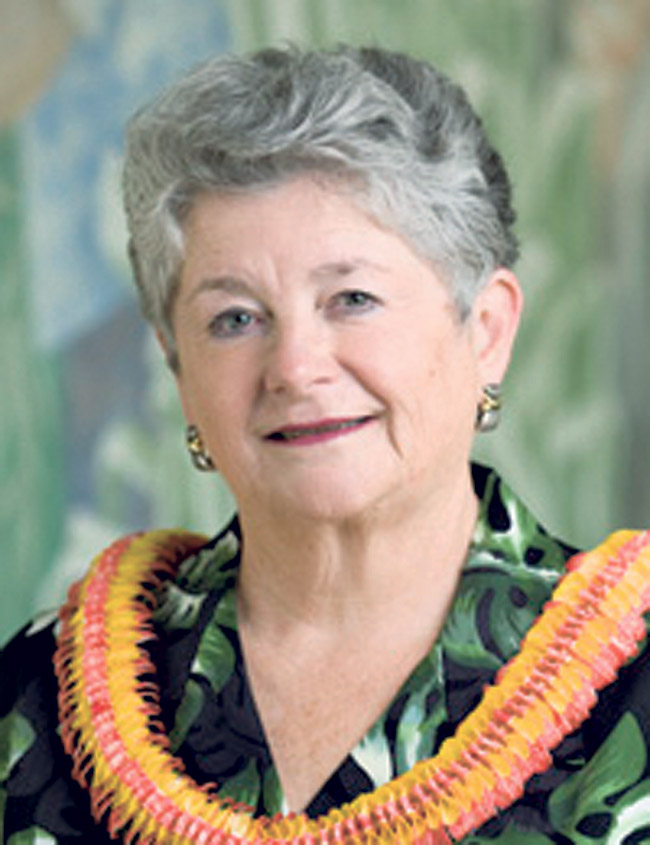Who’d Want To Be UH President?
M.R.C. Greenwood called it quits after four years as the University of Hawaii’s first female president. The 70-year-old Greenwood cited health concerns.
A university presidency is enough to make anyone sick. The officeholder must ward off infection from viral faculty, bacterial athletic boosters and ulcerous alumni.
But worse infections come from self-inflicted wounds, however minor, when legislators are hell-bent on oversight and press ravenous for a story. Thus has it always been.
Sugar fields covered the Hawaiian Islands in 1908, when the governing board of the territory’s new land-grant university fittingly chose professor of agriculture John W. Gilmore as the first president of the University of Hawaii. Gilmore served five years in the job, then passed it to a succession of long-tenured presidents: Arthur Dean, 1914-1927; David Crawford, 1927-1941; and Gregg Sinclair, 1942-1955. All eventually had a building named after them. So did Paul Bachman, but he died after only two years on the job.
Then came statehood, jet air service to the Islands, and explosive economic and population growth. Laurence Snyder became the first president in the university’s modern era. He lasted five years before the alumni came down on him when he suggested that the university eliminate its football team. (Sound familiar?)
Tom Hamilton replaced Snyder in 1963. Hamilton came from a working-class Indiana family; he knew how to charm the state legislators, many of whom had known childhoods in a plantation camp. Throughout Hamilton’s presidency, they routinely gave the university more money than Hamilton requested.
But the Vietnam War did Hamilton in. He denied tenure to an anti-war political science professor. The resulting furor among university faculty forced Hamilton to resign in 1968.
The Board of Regents then turned to a diplomat, Harlan Cleveland. A Rhodes scholar, Cleveland was long on gravitas, short on charm. Neither faculty nor legislators warmed to him.
Fujio “Fudge” Matsuda replaced him in 1974. An MIT-trained engineer and former director of the state Department of Transportation, Matsuda became the first Asian-American university president in the nation, and the first Hawaii-born president of the university. All helped him. He lasted 10 years, but not without a low murmuring from faculty ranks that somehow his local political connections made him unworthy.
The man originally selected to replace Matsuda had second thoughts and withdrew his name. Then vice president Al Simone took the job and kept it for eight years, buoyed by Japanese investment in Hawaii’s economy. Ken Mortimer had no such luck. He understood university governance, but Hawaii’s economy tanked at the outset of his eight-year tenure; he had to say “no” too many times to too many people.
Then came Evan Dobelle in 2001. Initially he impressed town and gown, Legislature and press. But he over-sold himself, and less than three years later the Board of Regents fired him.
Another vice president stepped into the breach. David McClain proved a good listener. He also enjoyed a redhot state economy, presiding over a $300 million UH Foundation fundraising campaign. He resigned and went back to teaching in 2009.
Enter Greenwood, smart and well-spoken, but faced with Hawaii’s version of the nation’s Great Recession and one of the silliest blunders in the annals of university administration. In order to raise money for a struggling athletic department, the university sent a check for $200,000 to a Florida post office box as down payment on a Stevie Wonder concert.
Oops.
Who’s next?




